According to the medical history, in recent months, Ms. T. often had abdominal pain and bloating, but she thought it was due to indigestion, so she bought medicine to take at home. When her condition did not improve, she went to Xuyen A General Hospital for examination. Here, Ms. T. had a gastrointestinal endoscopy and CT scan, which revealed a tumor in the hepatic flexure of the colon, which was the cause of intestinal obstruction and bloating. The doctors ordered the patient to be hospitalized for surgery.
The doctors agreed to perform surgery using endoscopic gastrointestinal catheterization to decompress the tumor. This is a new technique in the treatment of rectal and colon tumors that require radical surgery.
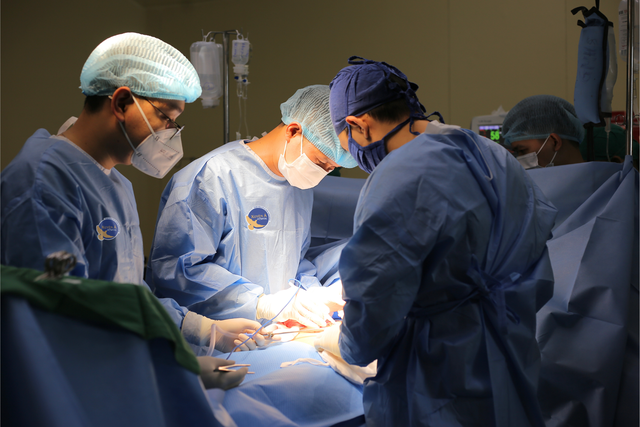
Doctors perform surgery on patients
Photo: BVCC
On May 6, Master - Doctor Phan Trung Hieu, Department of General Surgery, Xuyen A General Hospital said that during the surgery, the team performed laparoscopic surgery, removed the tumor and restored intestinal circulation. After the surgery, the doctor noted that the patient's intestines had significantly reduced edema, and the anastomosis was easy and safe. This shows that the method of endoscopic gastrointestinal catheter placement through the tumor to relieve pressure is also as effective as the method of artificial anus surgery on the tumor to relieve pressure, although the patient only needs to undergo one surgery.
After 2 days of surgery, patient T. was able to defecate, eat well and walk healthily.
"Colon cancer is a digestive tract disease, quite common in middle-aged patients. The disease often manifests with vague symptoms such as digestive disorders, bowel disorders, so we often easily ignore the disease. Therefore, when there are abnormal symptoms of the digestive tract, we need to go for an early examination to promptly detect and have an effective treatment plan," Dr. Hieu recommends.
New technique helps optimize colon cancer treatment
According to Dr. Hieu, normally, surgery to treat colon and rectal tumors will require two surgeries. The first surgery is to open an artificial anus above the tumor to relieve pressure, then a few days later, when the patient's health is stable, the doctor will perform the next surgery to remove the tumor and close the artificial anus.
However, with this regimen, the patient will have to endure 2 surgeries in one treatment course, and will be at risk of complications related to anesthesia, bleeding, etc. At the same time, the patient's health will also be affected more, recovery time will be longer, and it will cost more money.
To optimize the treatment process as well as bring safety and effectiveness to patients with colorectal tumors, the endoscopic method of placing a catheter through the tumor to decompress is a new option with many outstanding advantages. With this method, patients only need to undergo one surgery, thereby reducing complications related to anesthesia, bleeding, infection, reducing treatment costs and shortening hospital stay. In particular, patients avoid open surgery to create an artificial anus on the abdominal wall, thereby not having to face complications of surgery to close the artificial anus later.
Source: https://thanhnien.vn/tuong-chuong-bung-hoa-u-dai-trang-gay-bien-chung-185250505212114784.htm


























![[Photo] National Assembly Chairman Tran Thanh Man visits Vietnamese Heroic Mother Ta Thi Tran](https://vphoto.vietnam.vn/thumb/1200x675/vietnam/resource/IMAGE/2025/7/20/765c0bd057dd44ad83ab89fe0255b783)






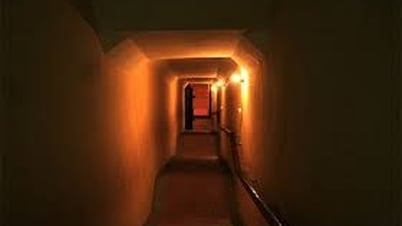




























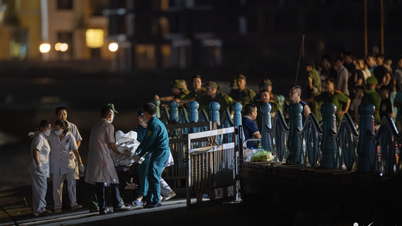

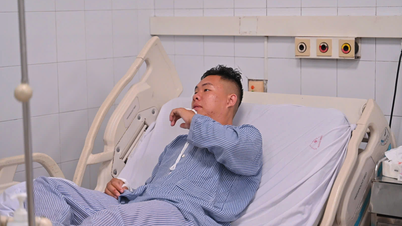




























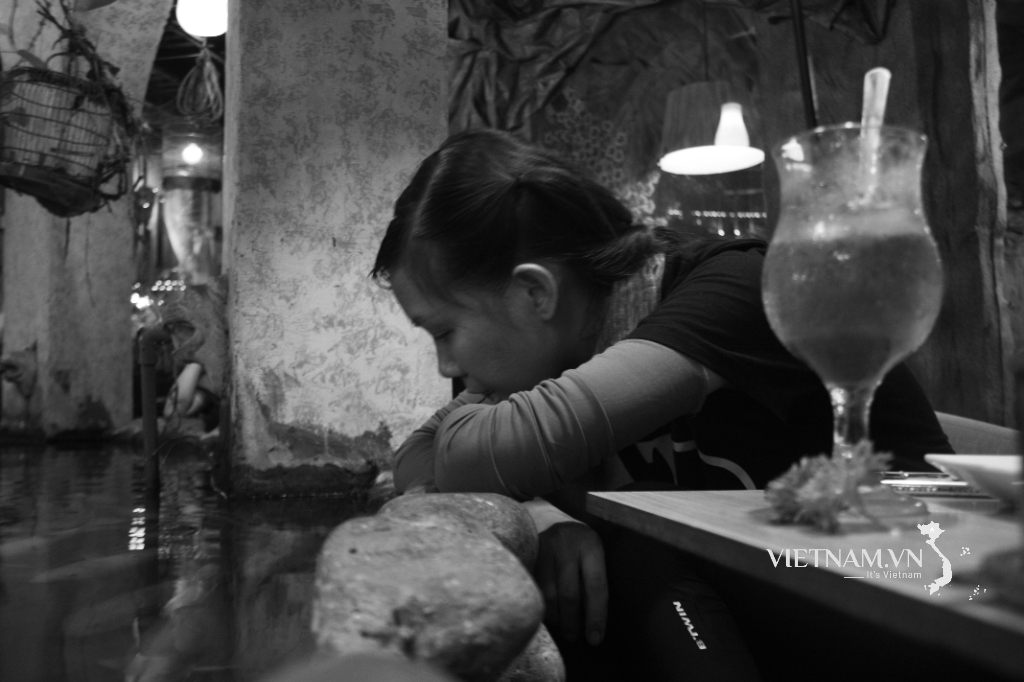



Comment (0)